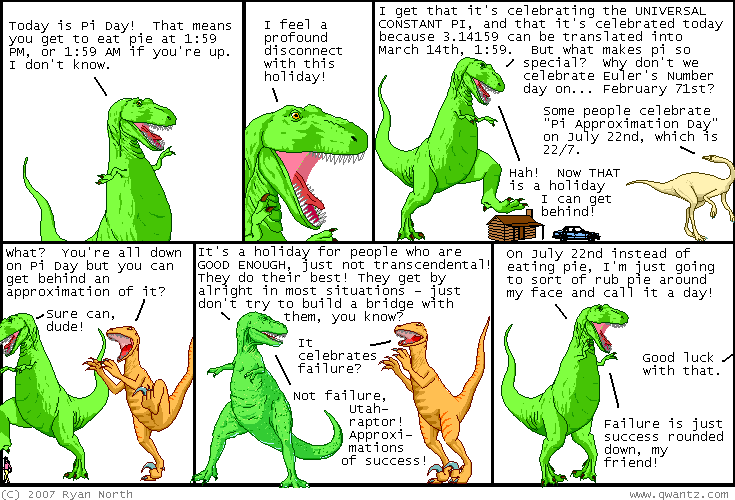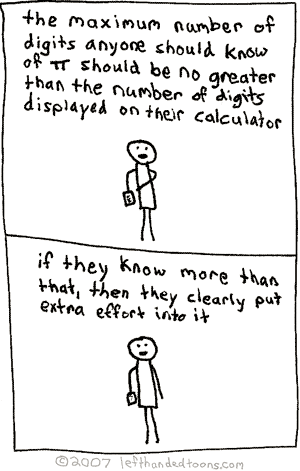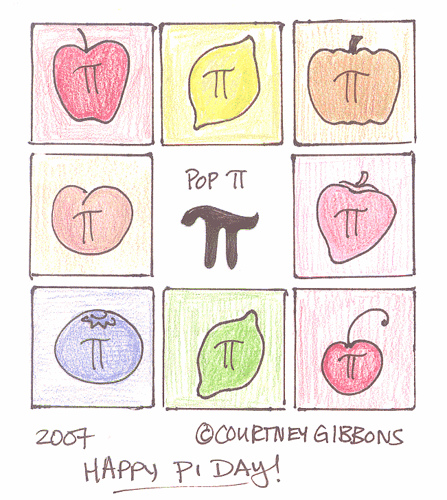I got an incredible opportunity to attend a math support session/workshop with children's math book author
Greg Tang today. This post is pretty numbers heavy, but if you skip to the end (where the other picture is), I've put in my two cents on the first half of what we covered today.

We started with a refresher course from Greg's 1st session back in December which covered breaking numbers down into partial sums to make addition, subtraction, multiplication, and division easier.
12 - 5 is an example of breaking a number down into partial sums.
12 - 5 can also be seen as
12 - (2 + 3) or
12 - 2 = 10
then 10 - 3 = 7.
Instead of using 5 as a concrete aboslute number, it can be seen differently in different situations. Greg also put up these equations to show this concept:
13 - 6
12 - 6
11 - 6
Sure, the 6 is the same in all cases, but if you conceptually think of 6 as different sums, it makes addition or subtraction much easier.
13 - 3 (10) - 3 = 7
12 - 2 (10) - 4 = 6
11 - 1 (10) - 5 = 5
Greg also said that building on a student's number sense will allow them to apply similar ideas on harder equations. If a student can use partial sums to do 12 - 5, they can apply it to 82 - 5 using the same ideas. Unfortunately, math education is cumulative building off the basics of addition which carries to subtraction. Addition also carries to multiplication. Multiplication then to division.
Another take away point of Greg Tang's workshop are the "easy" numbers to learn. The math world according to Greg says that multiplication should be taught in a different order. Memorization is detrimental because then children don't grasp number sense and what numbers actually represent. If children memorize the multiplication table, they'll only ever be able to do problems that involve 0x0 through 12x12. Developing methods to figure out answers is what Greg taught us. It also will lead to higher level math when factoring comes into the equation (pardon the pun). Students who have memorized the multiplication table don't have an understanding of factors. Factoring 56 becomes a much harder problem when you memorize instead of build from the basics up.
Greg told us children should learn their multiplication facts for the 0s first, then 1s, 10s, and 2s. The zero and one families are self explanatory. The 10s should be taught in terms of place value instead of "the trick to add a zero to the end." 5 x 10 should be thought as five tens. 345 x 10 should be thought as 345 tens. 2s are double what you started with.
Then to 3s, which is a double + one more:
24 x 3 =
double 24 = 48
48 + one more = 72.
4s are two sets of doubles:
15 x 4 =
double 15 = 30
doubled again 60.
5s and 9s depend on a solid understanding of 10s. 5s are really just half of 10s. Easy numbers to halve:
5 x 86 =
10 x 86 = 860
half of 860 = 430
And not so easy numbers to halve:
5 x 39 =
10 x 39 = 390
half of 390 isn't as "off the top of your head", but it can be easier if you see it as 300 + 90
half of 300 = 150
half of 90 = 45
150 + 45 = 195 = 5 x 39
9s are 10 subtracting one:
16 x 9 =
16 x 10 = 160 minus one
160 - 16 =
160 - 10 = 150
150 - 6 = 144
16 x 9 = 144
6s are double groups of 3s.
8s are double groups of 4s.
7s are no fun and make life hard.
But you can still use the idea and use a group of 5 and a group of 2s to get to your answer.
Finally division. Greg noted that division also uses these concepts of breaking down numbers into easier groupings to make math easier:
192 / 16 =
can be seen as 160 (which is an easy group to spot and understand) + 32 (which should also be apparent if you've got a firm understanding of your multiplication groups)
160 / 16 = 10
32 / 16 = 2
10 + 2 = 12
192 / 16 = 12
A not so easy division problem:
128 / 16 =
The process for this one is reducing the division problem. Greg said that teachers encourage students to reduce fractions, but not division problems.
Dividing both by 2 gives you 64 / 8, which is much easier to deal with.

And all of this in about 45 minutes! I apologize for the number heavy post today, but it was so incredible to see math in this way. It's so easy to grasp now as an adult, but I think it's also much easier for children to get a solid understanding of number sense this way.
It's unfortunate when you come in and a student is counting to do his/her multiplication problems. In most situations you don't have time to go back to addition (which is where multiplication really starts) to show them breaking down numbers. I still think there are opportunities for tutors and educators to work these ideas into learning situations. Sure, you can't reteach a student a completely different approach to math, but if your student asks: what's 6 x 8? You can come back with, what's 3 x 8? Can you double that? Isn't six 3 x 2? And if you do it often enough, students will stop depending on multiplication tables and charts that teachers put up in their classrooms and work out these more difficult multiplication problems themselves.
I'll post again tomorrow about the second half of the workshop (yeah, we covered a lot in a very short amount of time) on place values and thinking about grouping in a different way.
.


















